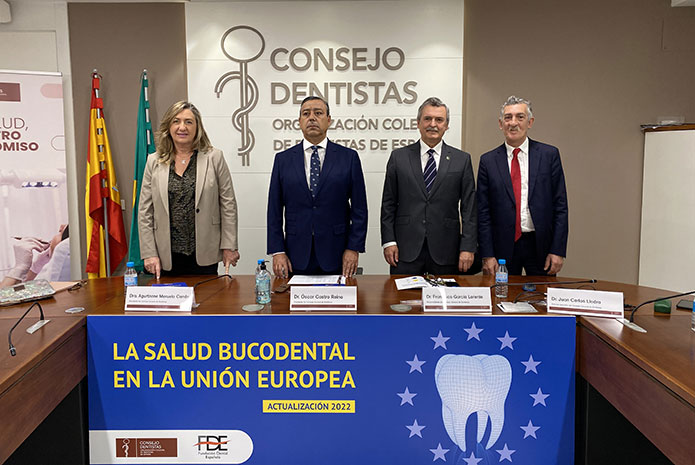It General Council of Dentists has been presenting, all morning of Friday, November 18th, the atlas “Oral Health in the European Union”a document where The oral health situation in Europe with the aim of knowing the main parameters and indicators of oral health, financing, coverage of care and human resources, among other data, and to be able to compare different countries.
During the presentation, the president of the General Council of Dentists, Dr. Óscar Castro Reino, details a few The most relevant issues from the European Atlas, as it refers to childhood caries (one-third of European adolescents aged 12 years have caries in permanent teeth. In Spain, the mean CAOD childhood caries index is 0.6); periodontal pockets (in Spain, the prevalence in adults is within the European average); or oral cancer (in 2020 more than 65,000 new cases of oral cancer were detected throughout the EU).
tooth coverage
On the European continent, more than half of total dental expenditure comes from direct patient payments. Therefore, Oral care is the type of treatment that Europeans most often neglect for financial reasons.
In Spanishcommunity coverage in dental and oral health is only 2%, meanwhile German It ranks as the European country where public participation in dental extraction is the highest, with 68%.
There are three types of dental treatment in the EU. It limited coverage (countries such as Spain, Greece, Italy and Portugal), where dental treatment is practically excluded from public coverage (between 1 and 7%); that partial coverage (France, Belgium, United Kingdom, Sweden), lies between 25 and 40%; and comprehensive coverage (Germany, Austria, Luxembourg), where community participation ranges from 70 to 75%.
Dentist in EU
In terms of what number of dentists Regarding, the European average is 76 per 100,000 population, with the Spanish level being 85 dentists per 100,000 population, with low demand for treatment. Spain, together with Romania and Bulgaria, presents one of the highest demand-adjusted dentist/population densities in the EU.
Atlas also collects averages from annual visit to the dentist. Spain, with an average of 0.7 visits per year, is behind Europe along with Hungary, Romania and Cyprus.
dental specialty
About specialization, currently practicing as specialists around 30,000 dentists across Europe. The most recognized specialization is Orthodontics followed by Oral Surgery. It should be remembered that Spain is the only European country where there is no recognized dental specialty.
It President of the General Council of Dentists explained that in recent years oral health policy has received increased attention, “culminating in the adoption and resolution of the WHO in 2021, urging Member States to further integrate oral health into their programs and on the agenda of non-communicable diseases”. “We hope that this Atlas -continued by Dr. Castro- will enable us to better understand our country’s situation in the European context, as well as help raise awareness about the importance of optimal oral health”.

“Internet trailblazer. Troublemaker. Passionate alcohol lover. Beer advocate. Zombie ninja.”




:quality(85)/cloudfront-us-east-1.images.arcpublishing.com/infobae/3FBT6VVNRDO6XEXJQM5YMGSWSU.jpg)

